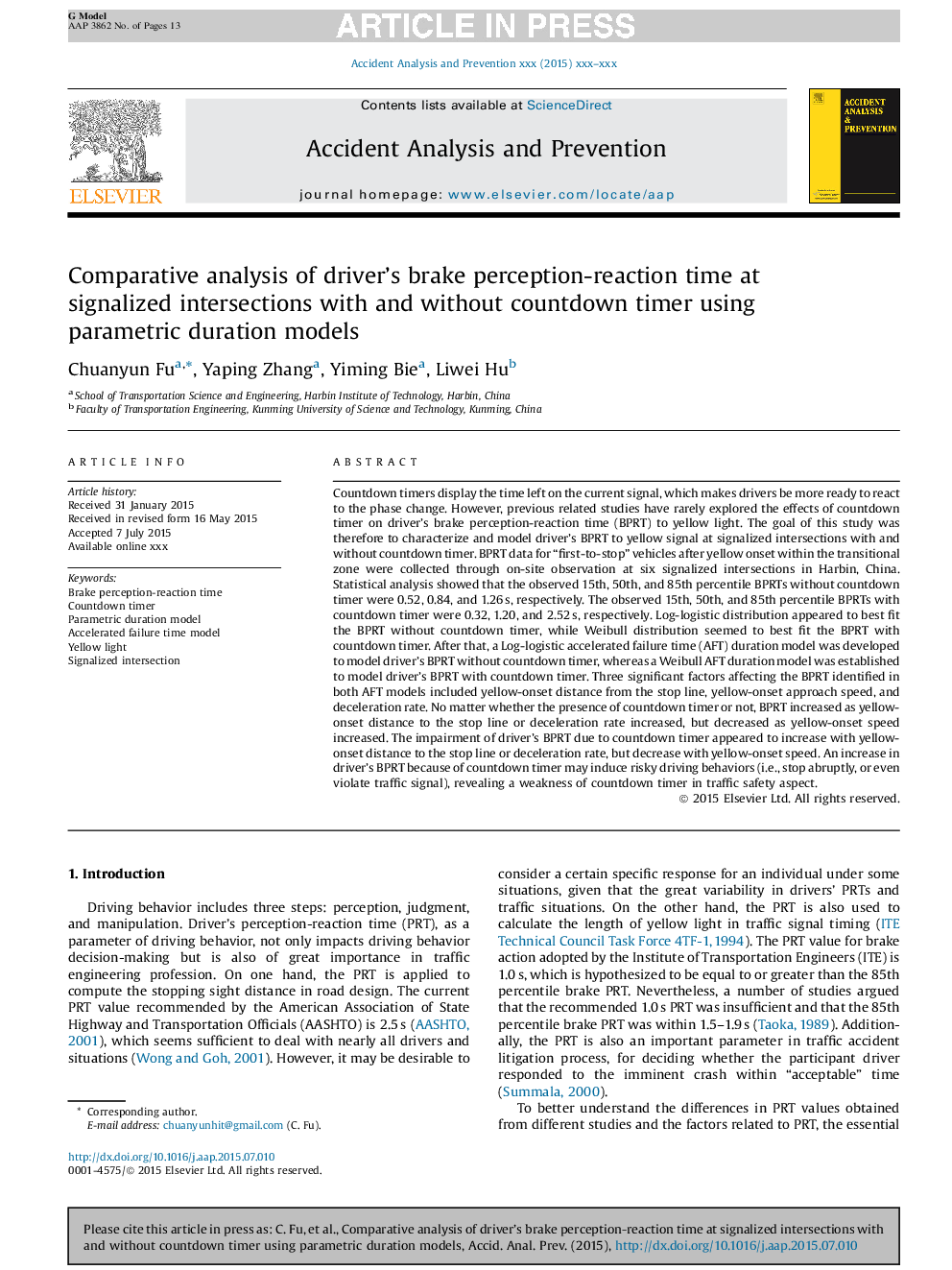| کد مقاله | کد نشریه | سال انتشار | مقاله انگلیسی | نسخه تمام متن |
|---|---|---|---|---|
| 4978799 | 1367781 | 2016 | 13 صفحه PDF | دانلود رایگان |
عنوان انگلیسی مقاله ISI
Comparative analysis of driver's brake perception-reaction time at signalized intersections with and without countdown timer using parametric duration models
ترجمه فارسی عنوان
تجزیه و تحلیل تطبیقی زمان درک واکنش ترمز راننده در تقاطع های سیگنال با و بدون تایمر شمارش معکوس با استفاده از مدل مدت زمان پارامتری
دانلود مقاله + سفارش ترجمه
دانلود مقاله ISI انگلیسی
رایگان برای ایرانیان
کلمات کلیدی
زمان درک واکنش ترمز، تایمر شمارش معکوس، مدل مدت زمان پارامتریک مدل زمان شکست شتاب نور زرد، تقاطع سیگنال داده شده،
موضوعات مرتبط
مهندسی و علوم پایه
مهندسی شیمی
بهداشت و امنیت شیمی
چکیده انگلیسی
Countdown timers display the time left on the current signal, which makes drivers be more ready to react to the phase change. However, previous related studies have rarely explored the effects of countdown timer on driver's brake perception-reaction time (BPRT) to yellow light. The goal of this study was therefore to characterize and model driver's BPRT to yellow signal at signalized intersections with and without countdown timer. BPRT data for “first-to-stop” vehicles after yellow onset within the transitional zone were collected through on-site observation at six signalized intersections in Harbin, China. Statistical analysis showed that the observed 15th, 50th, and 85th percentile BPRTs without countdown timer were 0.52, 0.84, and 1.26Â s, respectively. The observed 15th, 50th, and 85th percentile BPRTs with countdown timer were 0.32, 1.20, and 2.52Â s, respectively. Log-logistic distribution appeared to best fit the BPRT without countdown timer, while Weibull distribution seemed to best fit the BPRT with countdown timer. After that, a Log-logistic accelerated failure time (AFT) duration model was developed to model driver's BPRT without countdown timer, whereas a Weibull AFT duration model was established to model driver's BPRT with countdown timer. Three significant factors affecting the BPRT identified in both AFT models included yellow-onset distance from the stop line, yellow-onset approach speed, and deceleration rate. No matter whether the presence of countdown timer or not, BPRT increased as yellow-onset distance to the stop line or deceleration rate increased, but decreased as yellow-onset speed increased. The impairment of driver's BPRT due to countdown timer appeared to increase with yellow-onset distance to the stop line or deceleration rate, but decrease with yellow-onset speed. An increase in driver's BPRT because of countdown timer may induce risky driving behaviors (i.e., stop abruptly, or even violate traffic signal), revealing a weakness of countdown timer in traffic safety aspect.
ناشر
Database: Elsevier - ScienceDirect (ساینس دایرکت)
Journal: Accident Analysis & Prevention - Volume 95, Part B, October 2016, Pages 448-460
Journal: Accident Analysis & Prevention - Volume 95, Part B, October 2016, Pages 448-460
نویسندگان
Chuanyun Fu, Yaping Zhang, Yiming Bie, Liwei Hu,
